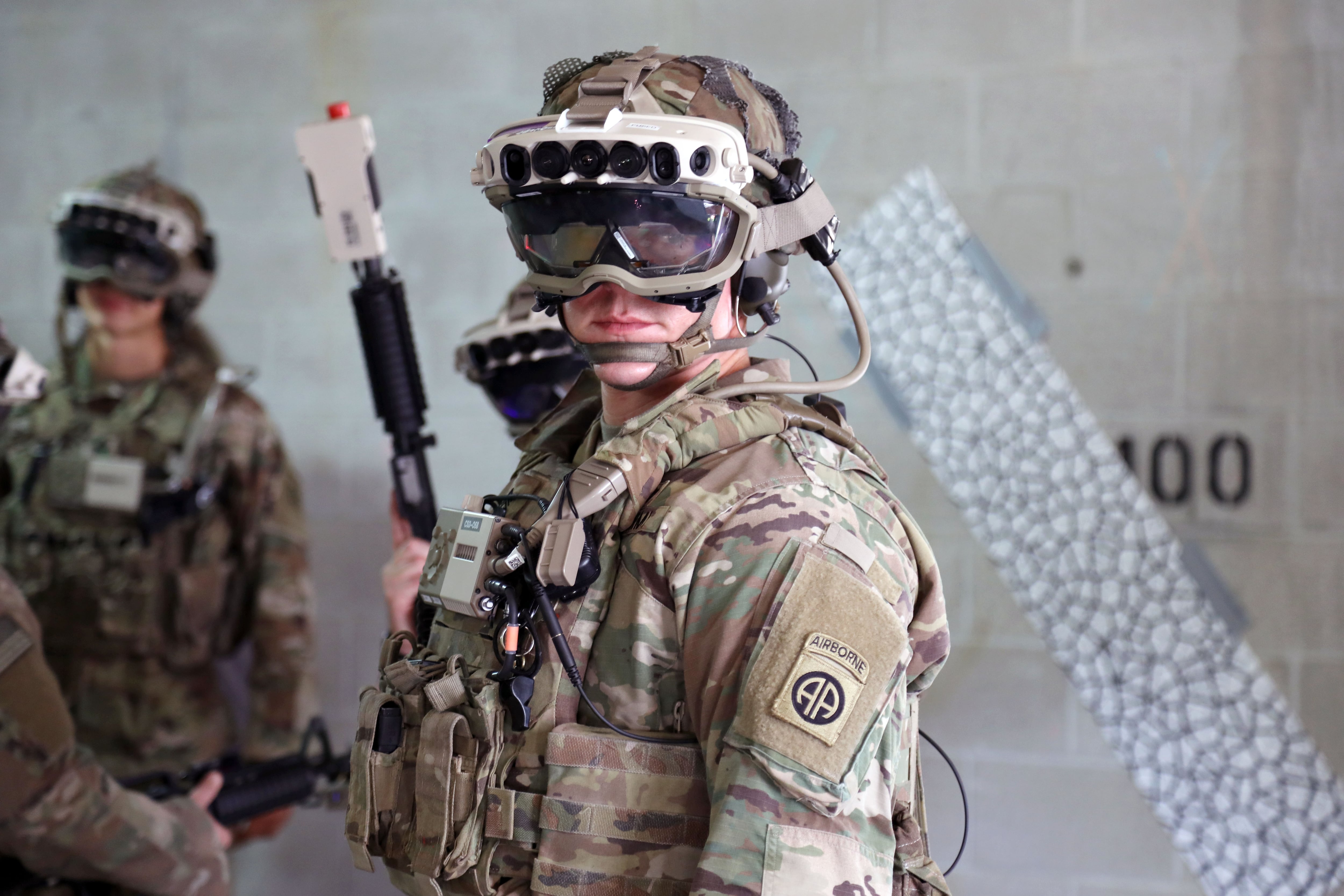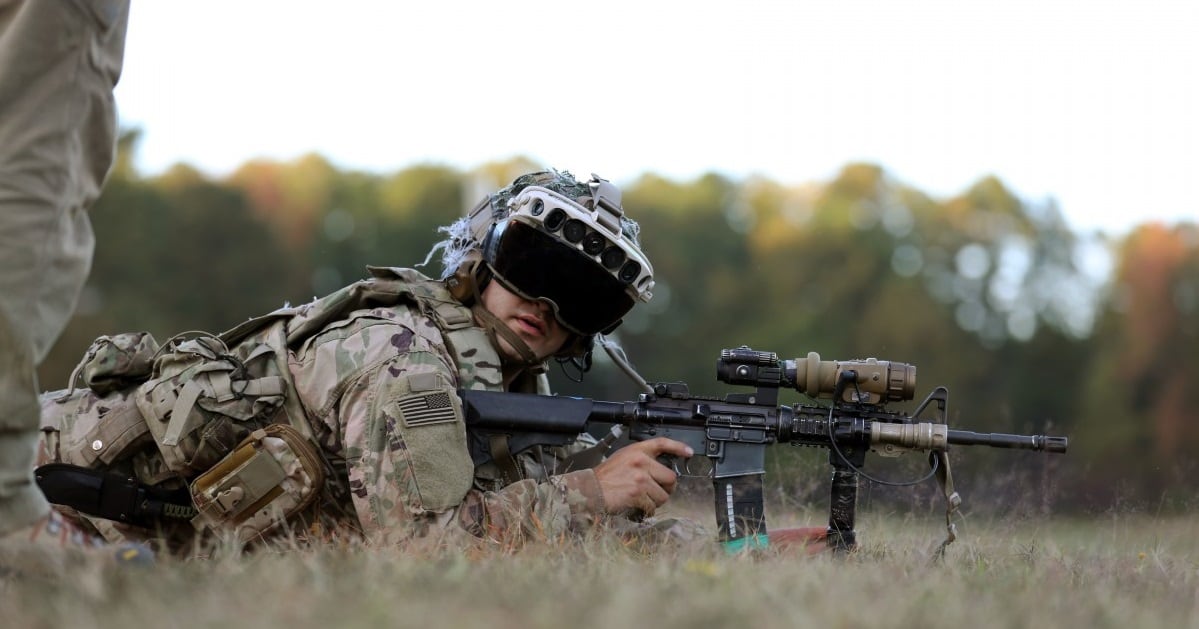The Pentagon Inspector General recently launched an audit reviewing the Army’s Integrated Visual Augmentation System.
The IVAS program aims to bring “mixed reality” goggles capable of night vision, thermal, targeting, navigation and other features to the dismounted soldier, similar to the capabilities that jet fighter pilots possess in their aircraft.
The media outlet Janes first reported this development and a DoD IG response on Monday.
The DoD IG publicly announced the audit Oct. 4 in a release on their website, but the announcement went largely unnoticed before recent delays in the IVAS program were more widely reported.
“The objective of this audit is to determine whether Army officials are producing and fielding Integrated Visual Augmentation System units that meet capability requirements and user needs,” the release reads. “We may revise the objective as the audit proceeds, and we will also consider suggestions from management for additional or revised objectives.”
RELATED

The Army announced earlier this year a nearly $22 billion contract with Microsoft for the IVAS program. The goggle’s foundational framework is the Microsoft mixed reality HoloLens. The project began in 2018.
In an email response to Army Times, also on Monday, the DoD IG office declined to discuss “ongoing oversight work” and could not provide an estimated timeline for completion of its work.
“As with our other oversight work products, this is a self-initiated project consistent with our independent oversight of DoD programs and operations,” reads an email response from DoD IG public affairs. “Upon completion of the audit, we will submit a final report with our findings, conclusions, and any recommendations to the DoD.”
Army Times reported Oct. 11 that the IVAS final testing and fielding would be delayed, according to Maj. Gen. Anthony Potts, head of Program Executive Office-Soldier, which oversees the IVAS program.
At the time, Potts said the command was working through fixes to the heads-up display before moving forward with the project. That work pushed certain evaluations and potential fielding to later in 2022.
Potts told Army Times in mid-September that the IVAS program would conduct a user trial in January 2022 on the newest, ruggedized design that is being built.
“We know we want this newer design for the baseline [model],” Potts said. And if those trials work out, operational tests of the IVAS are planned for later in 2022, he added.
In a follow-up interview and press release provided Oct. 14, Potts said the work was going to push the first unit equipped from mid-fiscal 2022 to September 2022. He also explained that there had been glitches with the heads-up display.
As the IVAS program neared test deadlines in August, Potts said developers found inconsistencies in some of the heads-up displays. Those caused a “screen door effect,” in some of the headsets, meaning the image resolution had a gridded view.
The problem was attributed to moisture getting into sensitive areas of the device, Potts said.
The other issue was one regarding field-of-view.
A 40-degree field-of-view has been the standard for most currently fielded mixed reality night vision devices, according to Potts. But the IVAS program sought to double that to an 80-degree field-of-view.
However, that effort pushed the boundaries of what waveguide technology can currently provide, Potts said. And technicians found that the wider field-of-view caused a stretching effect that slightly misaligned imagery in the mixed reality view. Potts likened the effect to pulling at a balloon and seeing the view distorted.
The distortion wasn’t as dramatic, but it caused enough of a misalignment of some features in the display that users’ eyes tried to adjust, which wasn’t effective for sustained use.
The current IVAS schedule, according to PEO Soldier:
- October 2020: Soldier Touchpoint 3
- December 2020: Rapid fielding decision
- January 2021: Vehicle integration with Strykers and Bradleys.
- February 2021: Cold weather test
- March 2021: Production award, tropical weather test
- April 2021: Soldier Touchpoint 4
- July 2021: Criteria before planned operational test user jury provided
- September 2021: Vehicle integration again with the Bradley, focused on adversarial electronic warfare and cybersecurity.
- May 2022: Operational test
- September 2022: First unit equipped
Senior Army leaders and the Army Acquisition Executive Office were informed that they should fix the field-of-view and moisture problems as they continue work on other parts of the goggles, according to Potts.
And, Potts said, other work is on schedule, including stabilizing software sets, single-channel data radio linkage, tactical cloud packages and overall system integration.
Currently, the Army’s Night Vision Labs and Microsoft are working on fixes that were discerned from modeling and simulation work to solve the two problems. Those fixes will be evaluated in January or February, Potts said.
That puts the operational test to May 2022 and the first unit equipped to September 2022, according to PEO Soldier.
“If six or nine more months gives us a really good, much better display quality,” then the delay was worth it, Potts said.
Todd South has written about crime, courts, government and the military for multiple publications since 2004 and was named a 2014 Pulitzer finalist for a co-written project on witness intimidation. Todd is a Marine veteran of the Iraq War.





